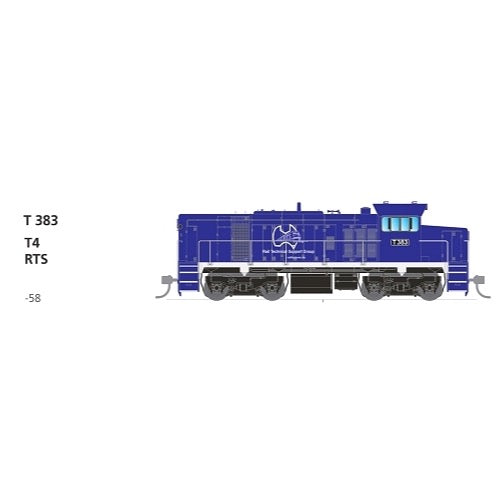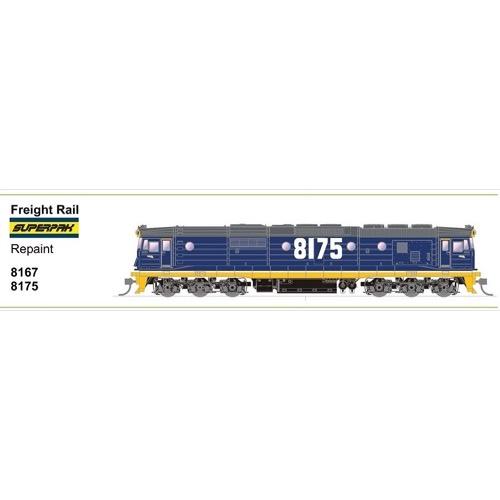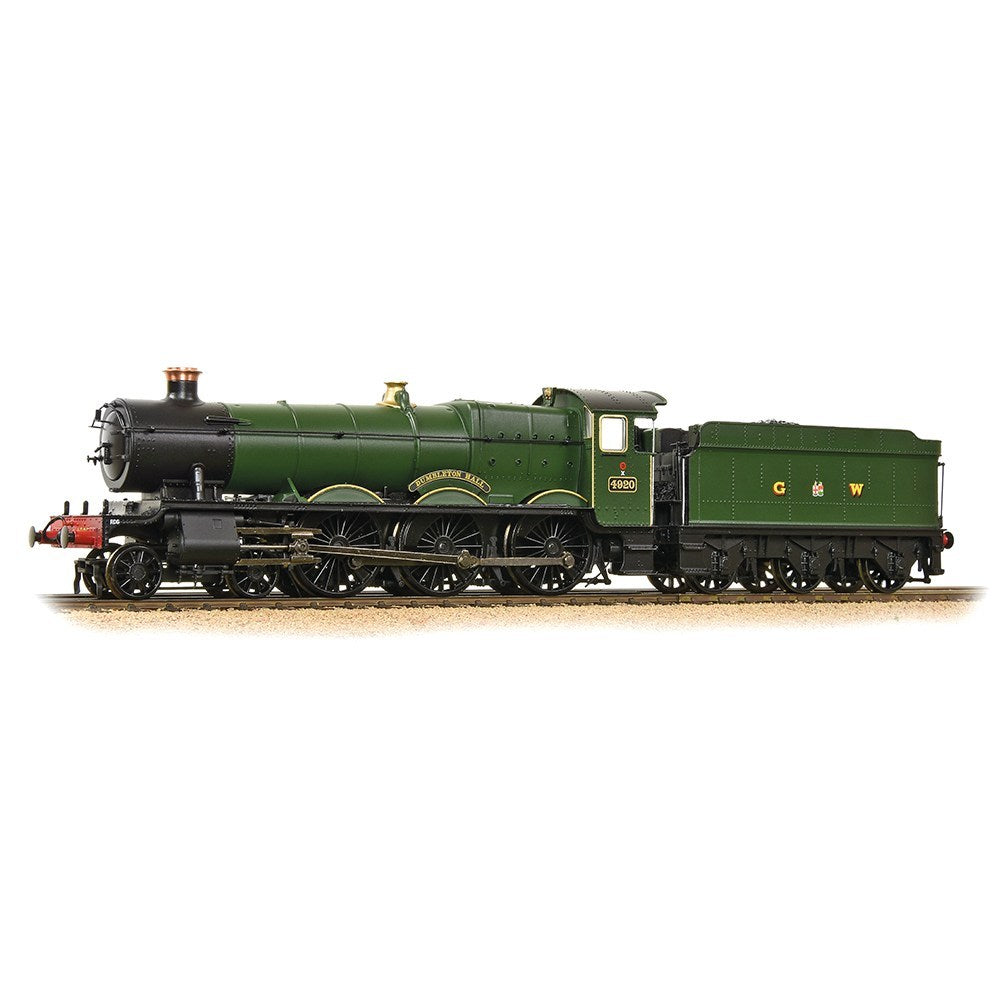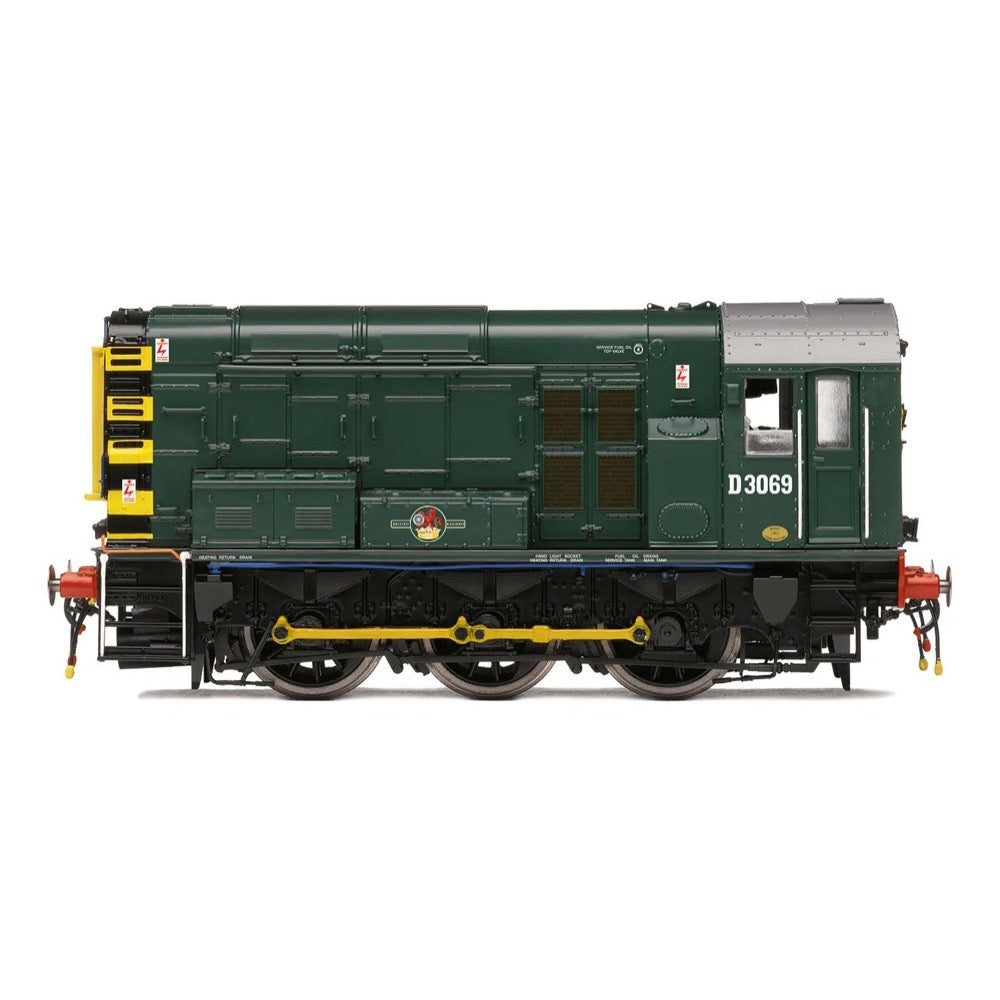
Hornby R30301TXS OO BR Class 08 0-6-0 D3069 Era 5 Sound Fitted Locomotive
The Class 08 will go down in history as one of the most dependable shunters ever built. While all Class 08 shunters were built by British Railways they are actually based on an earlier LMS design. With 996 of these shunters built between 1953 and 1962, they are still a common sight at mainline yards and sidings, and a common sight on heritage railways, with the number preserved almost outnumbering those currently in service.
With no thought given to aesthetics, the Class 08 was a utilitarian workhorse of the railways, with its longevity speaking volumes to its performance. The locomotive would have a cab at the number one end and equipment housed in the long nose extending towards the number two end.
While not intended for mainline duties, some of the class in the south could be seen trundling up the mainline if there was a short distance between yards that stock needed to be moved between, assuming no express services needed to occupy the track at the time.D3069 was built in November 1953 as part of the first batch of Darlington built shunters.
Initially, the locomotive was numbered 13069, with this number it was allocated to shed 38E in Woodford Halse in Northamptonshire. In 1957 it would see its first renumbering to D3069. The locomotive is one of a very small number of shunters to never receive a TOPS number, being absorbed by BR as departmental stock in July 1974.
In departmental use it was renumbered to 966509 and it would wear this number until June 1979 when it left the departmental pool. The locomotive would be cut up in 1980 by BR at Thornaby, all traces of the locomotive were gone by the end of May.
Specification
- Item Length - Without Packaging (cm): 12.4
- Item Height - Without Packaging (cm): 5
- Item Width - Without Packaging (cm): 3.5
- Item Weight - Without Packaging: 0.2
- Item Scale: 1:76 Scale 00 Gauge
- Finish: Painted
- Colour: Green
- Gauge: OO
- DCC Status: Sound fitted
- Operator: BR
- Designer: BREL
- Wheel Configuration: 0-6-0
- Livery: BR Green
- Minimum Curve (mm): Radius 1
- Motor: 5 Pole Skew wound
- Number of Parts: 1
- Class: Class 08
- Buffer Type: Sprung Metal Buffers
- Coupling Type: NEM Tension Lock
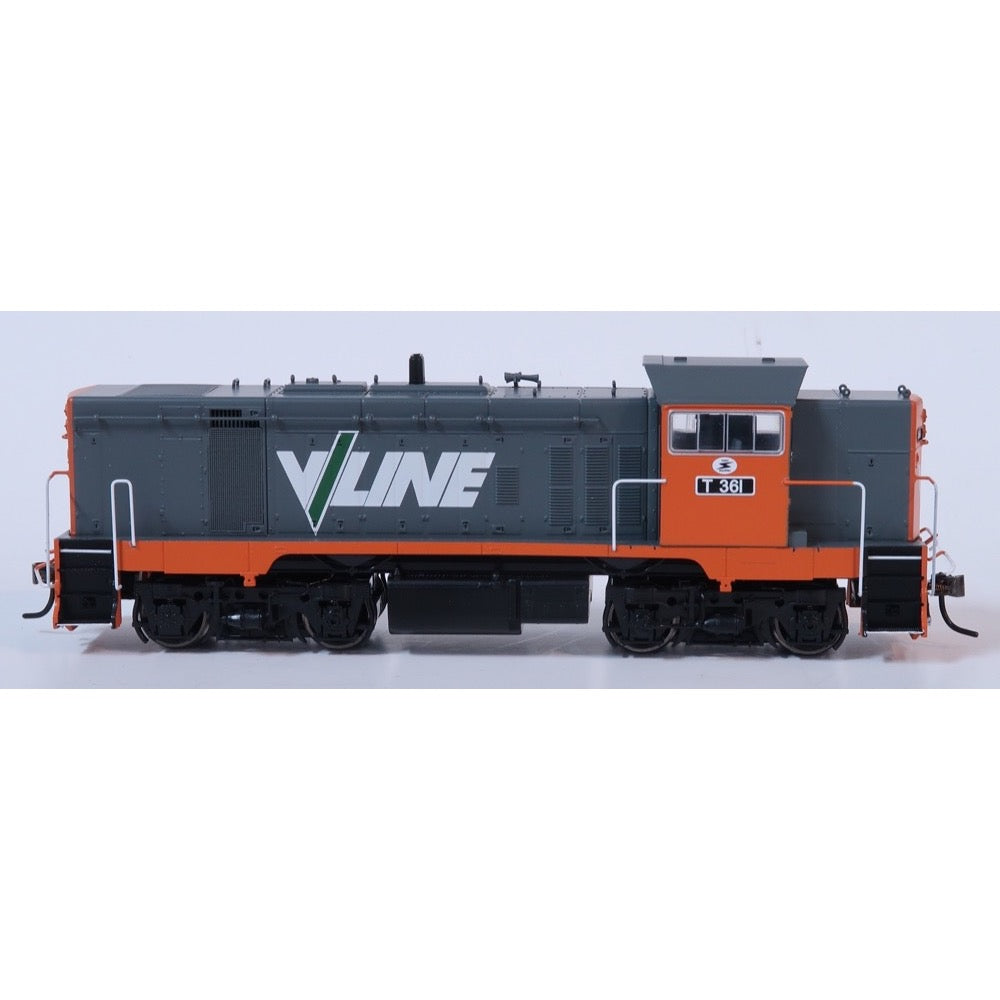
Powerline PTDS2-2-361 HO V/Line Tangerine and Grey T-Class Series 2 (T3) T361 with Cut Away Valance
T361 V/Line Tangerine/Grey
- HO Scale
- T-Class Bo-Bo Diesel-Electric
- Series 2 High Nose T3
- DCC Ready Speaker Fitted
- Requires ESU V5.0 21-pin DCC decoder
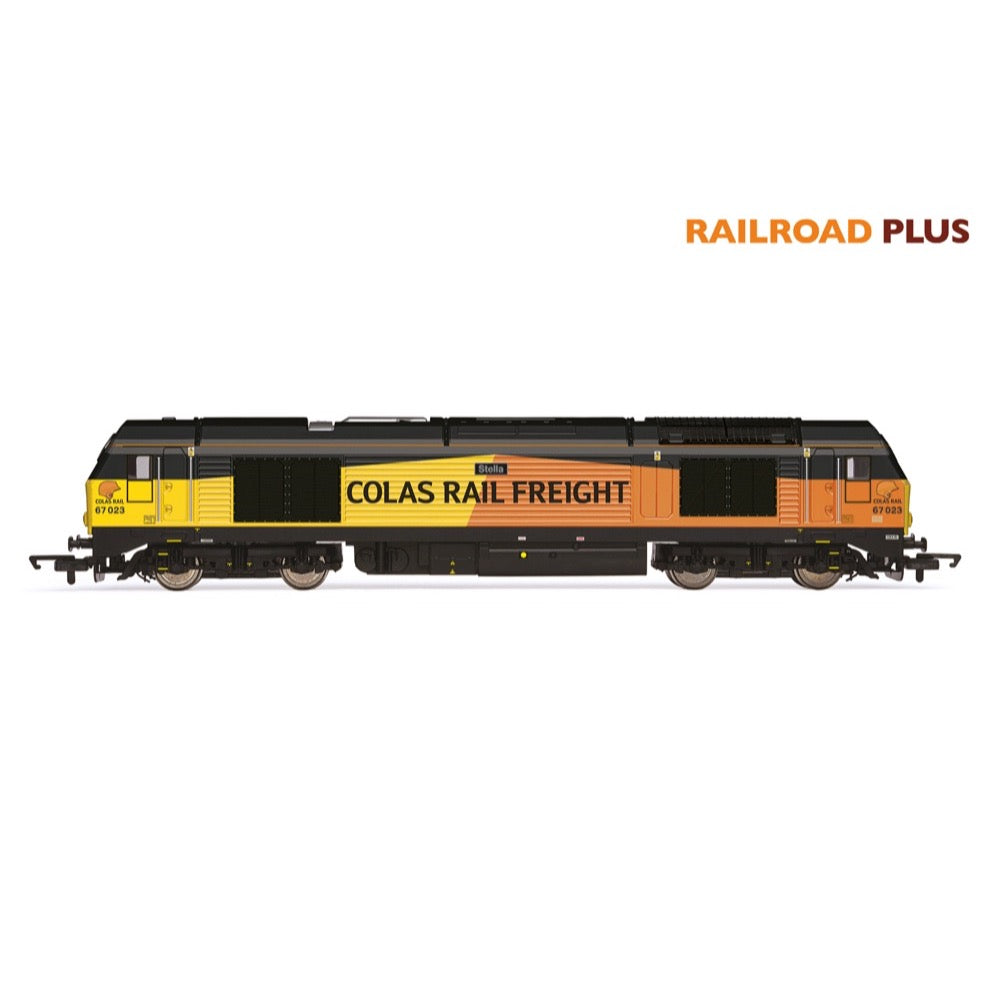
Hornby R30184 OO RailRoad Plus Colas Rail Class 67 Co-Co
The Class 67 locomotives are a Class of Bo-Bo diesel-electric locomotives which were built for the English Welsh & Scottish Railway (EWS) between 1999 and 2000 by Alstom at Meinfesa in Valencia, Spain with drive components (engine, generator and traction motors) from General Motors' Electro-Motive Division. The locomotives are able to supply Electric Train Supply for passenger train heating and air-conditioning, and are equipped for buffer and screw coupling and also coupling via a buckeye coupler attached on a swing arm mount. High speed running tests were undertaken with 67002 starting at Alstom's facility at La Sagra (Toledo, Spain) and running on the standard gauge Madrid-Toledo high-speed rail line. A top speed of 143 miles per hour was obtained. Initially the Class were used primarily on mail trains. In June 2003 EWS lost the Royal Mail mail train contract, with services diminishing to complete cessation in March 2004.The locomotives have since been used by First ScotRail on the Caledonian Sleeper on non-electrified lines north of Edinburgh. In April 2015, A staple of Hornby since 2006, when we produced our first BR Class 67 in Dublo.
Specification
- Item Length - Without Packaging (cm): 25.9
- Item Height - Without Packaging (cm): 5.9
- Item Width - Without Packaging (cm): 11.2
- Item Weight - Without Packaging: 0.87
- Item Scale: 1:76 Scale 00 Gauge
- Finish: Painted
- Colour: Orange
- DCC Status: DCC Ready 8 pin socket
- Operator: Colas Rail
- Designer: Alston Meinfesta
- Livery: Colas Rail
- Minimum Curve (mm): Radius 2
- Motor: 5 Pole Skew wound
- Number of Parts: 1
- Class: Class 67
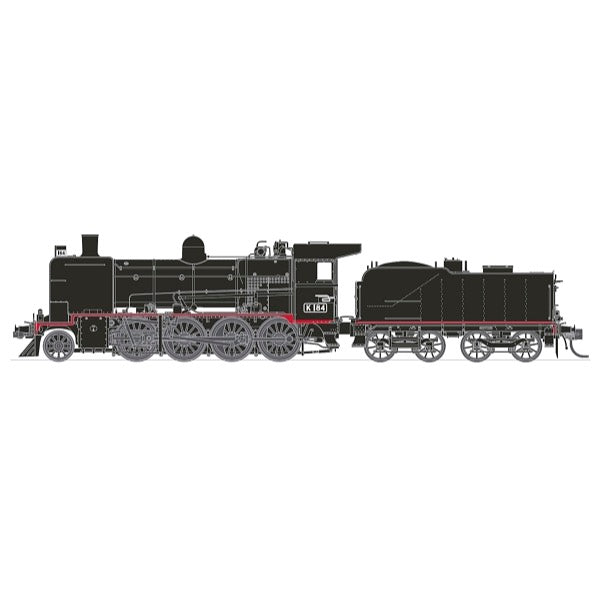
Phoenix Reproductions HO K184 Preserved K Class Locomotive DCC Sound
The Victorian Railways built 53 K class engines at Newport Workshops over a 24 year period, commencing in 1922. The first series of 10 engines were progressively rebuilt in the 1940s to match the performance and visual appearance of the other class members. Later in 1946 the last 9 engines entered service, these engines had single cab side windows and the last 7 engines were fitted Boxpok style driving wheels.
They were extremely versatile engines and could be found and all classes of trains, many worked until the late 1960s and several into the early 1970s.
The Phoenix Reproductions model represents the class in it's later years of government service as well as several colourful liveries of early days preservation.
Features
- Highly detailed Ready-to-Run HO gauge model
- Diecast boiler, frame and footplate
- Genuine Kadee scale head whisker coupler (Tender)
- Separately applied boiler details
- Working LED lights
- All models come standard with an MTC 21 pin motherboard
- Keep Alive Circuit
- DCC version with LokSound V5 decoder
- 22" Minimum Radius
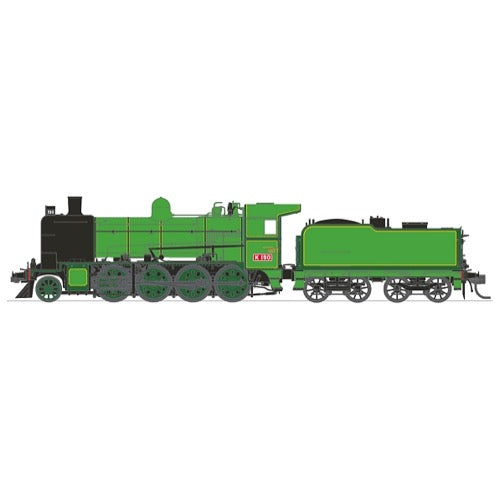
Phoenix Reproductions HO K190 Preserved Green 2-Tone K Class Locomotive
The Victorian Railways built 53 K class engines at Newport Workshops over a 24 year period, commencing in 1922. The first series of 10 engines were progressively rebuilt in the 1940s to match the performance and visual appearance of the other class members. Later in 1946 the last 9 engines entered service, these engines had single cab side windows and the last 7 engines were fitted Boxpok style driving wheels.
They were extremely versatile engines and could be found and all classes of trains, many worked until the late 1960s and several into the early 1970s.
The Phoenix Reproductions model represents the class in it's later years of government service as well as several colourful liveries of early days preservation.
Features
- Highly detailed Ready-to-Run HO gauge model
- Diecast boiler, frame and footplate
- Genuine Kadee scale head whisker coupler (Tender)
- Separately applied boiler details
- Working LED lights
- All models come standard with an MTC 21 pin motherboard
- Keep Alive Circuit
- DCC version with LokSound V5 decoder
- 22" Minimum Radius
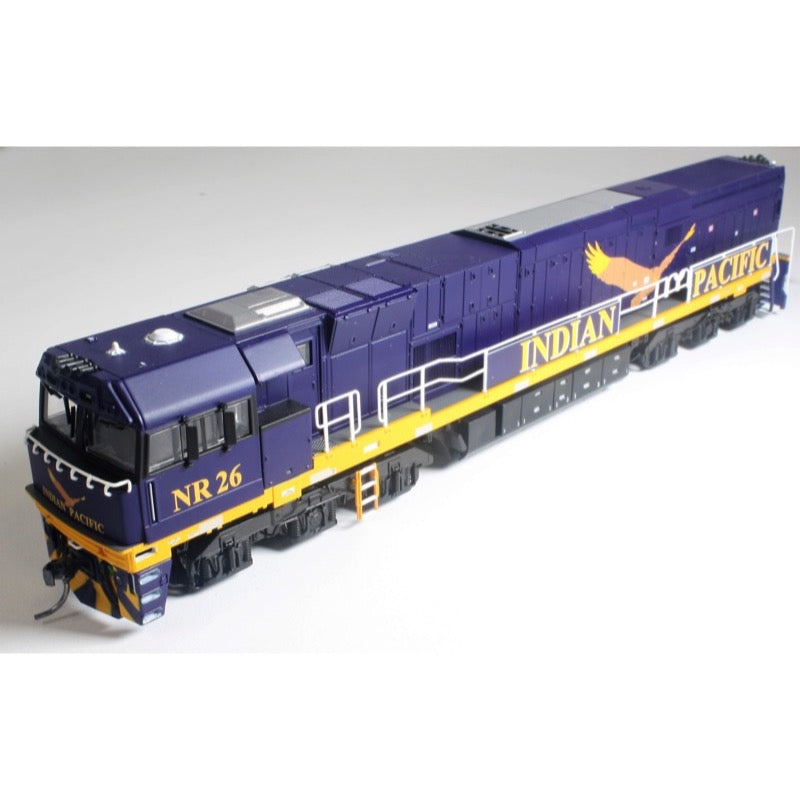
SDS Models NR517 HO NR26 Indian Pacific Mk1 NR Class Locomotive DCC Sound
Introduced in 1996 by National Rail Corporation these 120 units were built by A Goninan and Co. The locomotives are 3000kw General Electric powered and used on standard gauge Australia wide.
They were introduced in grey and marigold and several were painted into various business units of NRC. Later they wore GSR train liveries representing the Hook and Pull agreement between the two companies.
In 2002 Pacific National acquired the assets of NRC and commenced to repaint the NR class into their new blue and yellow colours.
The model features the current tooling from Austrains and includes operating headlights, marker and ditch lights and is Kadee equipped. These are an ideal way to add colour to your collection.
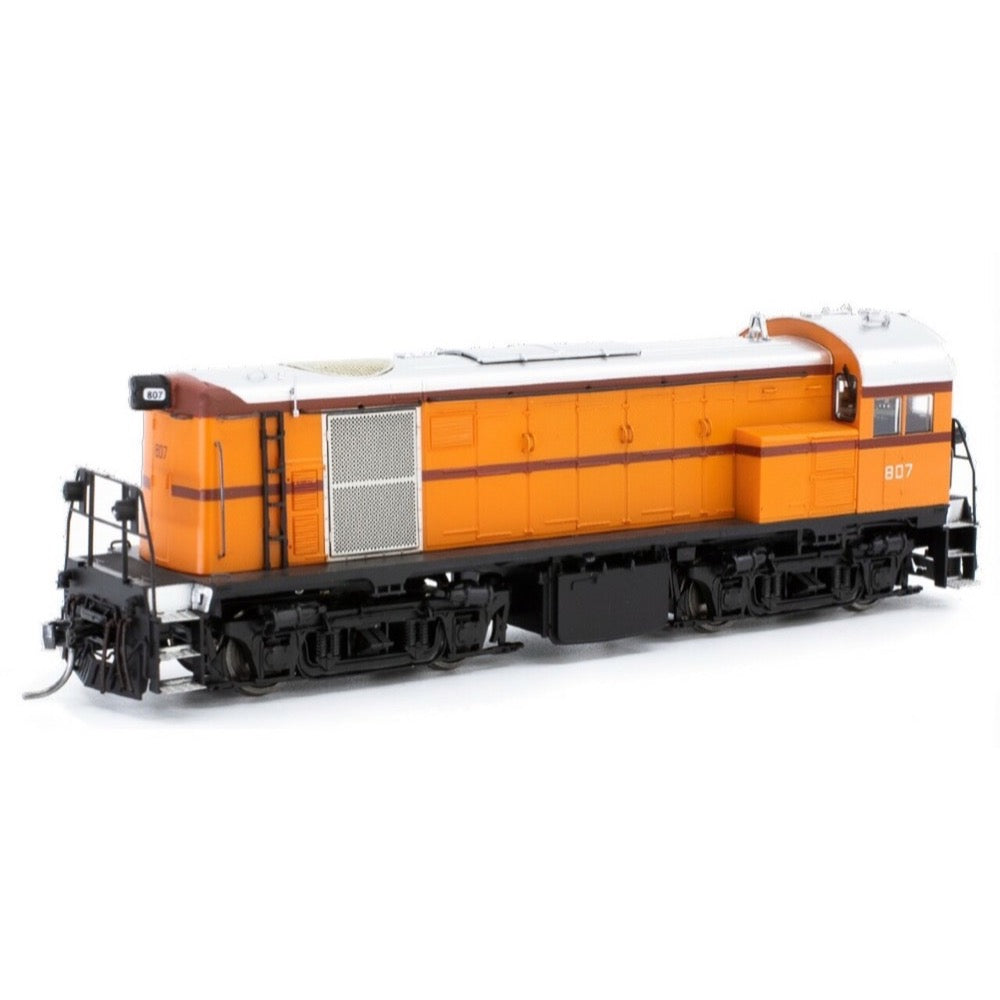
SDS Models HO 807 SAR Tangerine 800 Class Locomotive
SDS Models HO 807 SAR Tangerine 800 Class Locomotive
Entering service from the mid 1956 onwards these 10 English Electric 750 HP shunting locomotives were numbered from 800 to 809. They were predominantly found working around Port Adelaide and in particular Gilman Yard. Later and from time to time they could also be found working Passenger trains around the suburbs. They remained in service until the late 80s and some units through until 1991, all except 801 were scrapped. When AN commenced operations the class leader 800 was renumbered to 810.
Features
- Highly detailed Ready-to-Run HO gauge model
- Precisely tooled plastic body (ABS)
- Genuine Kadee scale head whisker coupler
- Separately applied handrails and detail parts
- 5-Pole skew wound electric motor and dual flywheels
- All wheel drive and electrical pickup
- LED head and marker lights, body mounted
- All models come standard with an MTC 21 pin motherboard
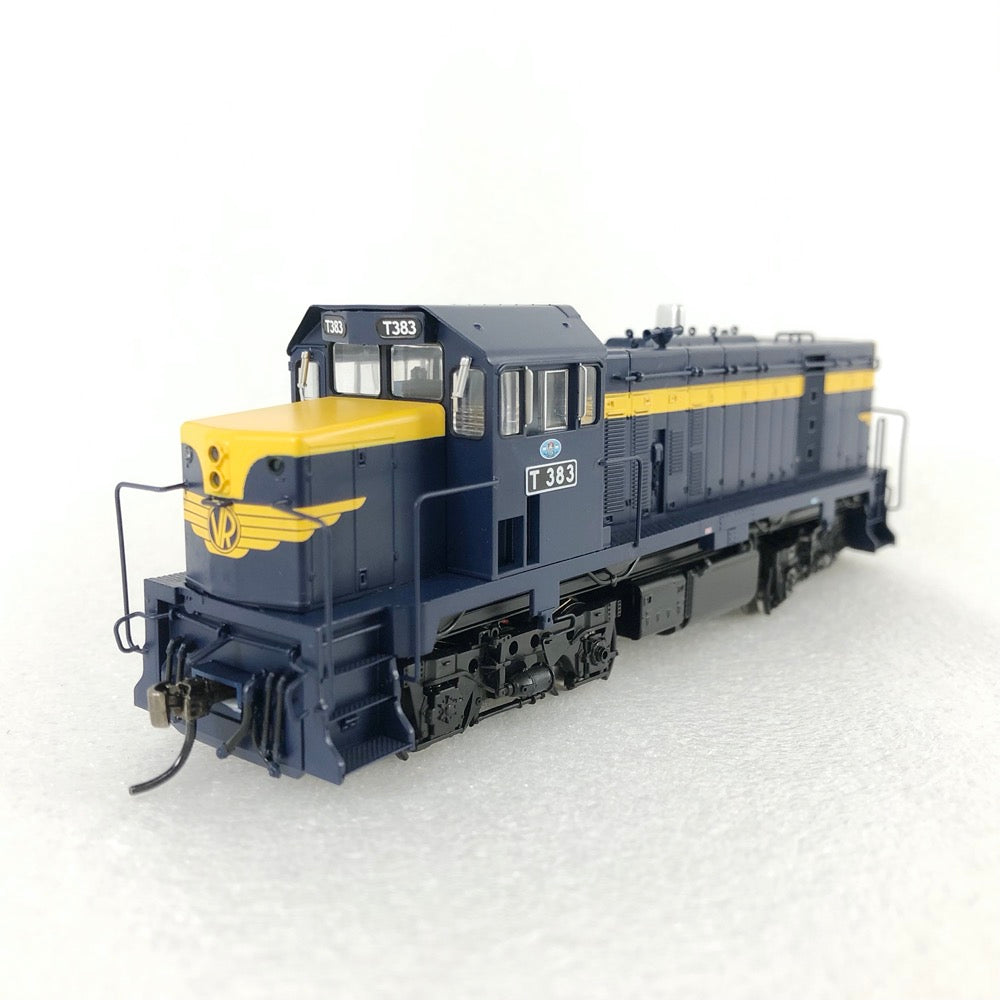
Powerline PT3-1-381 HO T381 VR Blue and Gold Series 3 T Class Locomotive
Powerline PT3-1-381 T Class, Series 3, Low Nose, VR T381 | HO Scale
The T class are a class of diesel locomotives built by Clyde Engineering, Granville for the Victorian Railways between 1955 and 1968. The concept of the locomotives was to partially dieselise country branch lines, along with offerring increased freight and passenger capacity. They eventually became the workhorse of Victorian Railways, and although ordered as branch line locomotives, they were often used on main line services.
In June 1959 the first of an additional ten entered service. Although mechanically similar to the first batch they differed by having a cab raised above the hood line. A further ten entered service from December 1961. In September 1965 the first of an order for 32 was delivered. These differed by having a lower nose. A final order for 19 was delivered from April 1967. The last five were built with an extra 10 tonnes (9.8 long tons; 11 short tons) of ballast weight for improved adhesion and low speed controls for use as shunting locomotives in Melbourne. These were reclassified as the H class shortly after being delivered. In July 1969 an additional flat top unit was purchased second hand from Australian Portland Cement who had ordered it for use at its narrow gauge Fyansford Cement Works Railway, Geelong in 1956. Although outwardly similar to the original T class units it was fitted with dynamic brakes, and became a regular on the steeply graded Cudgewa line.
Features
-
Highly detailed model with authentic livery
-
Upgraded and modified with MTC21 21pin socket
-
Speaker fitted making the loco DCC & Sound ready
-
Directional Lighting
-
5-pole can motor with twin flywheels
-
Metal knuckle couplers
-
RP25 blackened metal wheels
DCC Type
This locomotive is DCC READY and takes a 21-pin type decoder. A speaker is pre-fitted to this model for quick upgrade to DCC Sound.
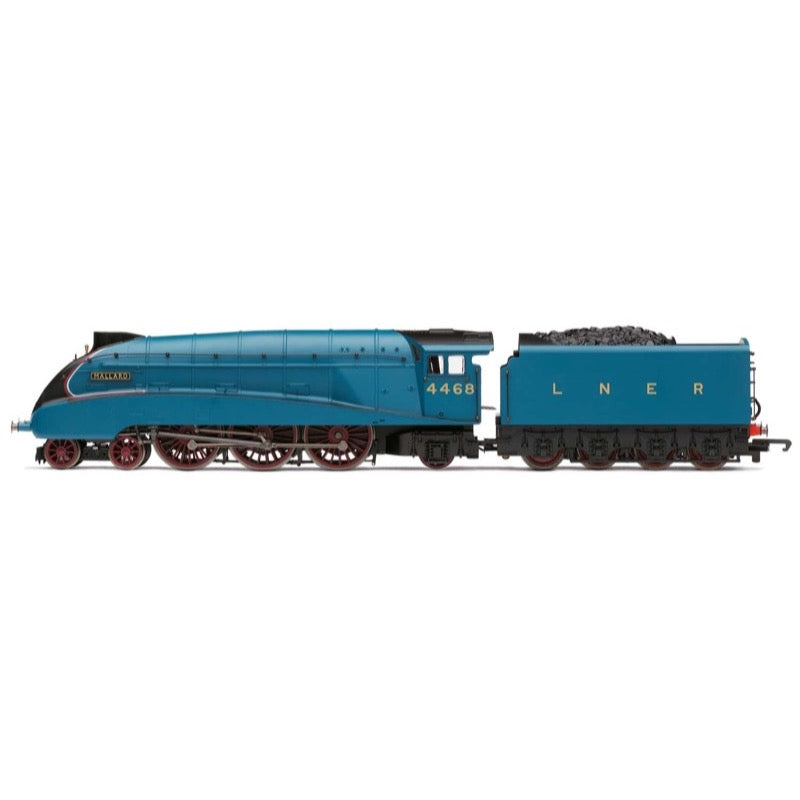
Hornby R3371 RailRoad LNER 4-6-2 Mallard A4 Class
The LNER Gresley A4 is probably the most iconic Pacific Express design of locomotive in Great Britain, with its streamlined casing. It was a classic symbol of the attitude towards speed and design in the 1930s, which saw increased competition to the railways from road and air travel. The LNER Board knew that they had to make travel between the major cities faster, comfortable and more reliable. High speed diesel services were starting to make an impact abroad and in May 1933, the German State Railways diesel-electric Fliegende Hamburger entered service, running for extended periods at 85mph.
By 1934, in the USA, Burlington Zephyr had reached 112.5mph during a longer 1,015 mile journey. Nigel Gresley, the LNER's Chief Mechanical Officer, travelled on the Fliegende Hamburger and was impressed by its streamlining, although he realized it was only efficient at high speeds. Gresley was certain that a modified A3 Pacific, with streamlining, could haul greater loads than the German or US locomotives, at the same speed or faster and a series of trials were conducted to confirm the Al's suitability.
With the trials successfully completed, the LNER Board gave Gresley the go-ahead to create the "Silver Jubilee" streamlined trains, the first of the new streamlined A4s.The streamlining of the A4s' steam circuit, higher boiler pressure and extension of the firebox to create a combustion chamber made them more efficient than the A3 as they consumed less coal and water- especially later on when they were also fitted with a Kylchap double chimney. This improved their free steaming capabilities further. Their streamlined design not only made them capable of high speeds, but created an up draught of smoke, preventing obscuring the driver's vision that was such a major problem on the Class A4 engines. The story goes that during wind tunnel testing, after several unsuccessful efforts to get the smoke to lift clear, a thumbprint was inadvertently left on the clay model just behind the chimney. This succeeded in clearing the smoke and was incorporated into the final design.
In total, 35 A4s were built in four batches: 2509 - 2512, 4462- 4469, 4482 - 4500 and 4900 - 4903, between 1935 and 1938. They spent their working lives hauling express passenger services from King's Cross to Edinburgh via York and Newcastle. Although the Deltics proved worthy successors of the A4s on East Coast Mainline express services in the late 1950s, other diesel classes were unreliable. The A4s were kept in service until the mid-1960s, the last service under British Rail being the Aberdeen-Glasgow service on September 14, 1966.It was in July 1938 that 'Mallard' was recorded travelling at 126mph at Stoke Bank on the East Coast Mainline, snatching the record from the German railway by a mere 1.5 mph - a record that still stands to this very day.
Produced under license for SCMG Enterprises Ltd © SCMGE.
Specification
- Item Length - Without Packaging (cm): 29.1
- Item Height - Without Packaging (cm): 5
- Item Width - Without Packaging (cm: 3.5
- Item Weight - Without Packaging: 0.28
- Item Scale: 1:76 Scale 00 Gauge
- License: Yes
- License line: Produced under licence for SCMG Enterprises Ltd. National Railway Museum © SCMG. Images and packaging designs © SCMG. Every purchase supports the museum. www. nrm.org.uk
- Finish: Painted
- Colour: Blue
- Gauge: OO
- DCC Status: DCC Ready 8 pin socket
- Operator: LNER
- Designer: Sir Nigel Gresley
- Wheel Configuration: 4-6-2
- Livery: Blue
- Minimum Curve (mm): Radius 2
- Number of Parts: 1
- Class:A4 Class


